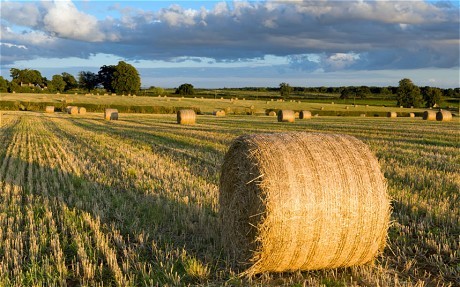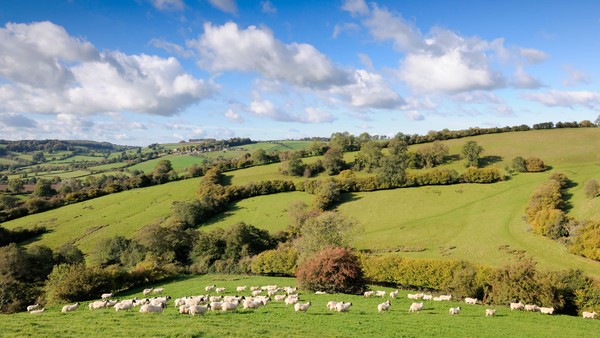How To Invest In Farmland
Post on: 16 Май, 2015 No Comment

Food prices are skyrocketing globally.
Surging global population growth — especially in India and China — is fueling food supply shortages. And, in September 2012, world food prices hit record highs, according to the United Nations’ food agency. There’s no end in sight to shortages, say experts.
No surprise then that legendary commodity investor Jim Rogers is gung-ho about farming. He thinks farmland is undervalued, and it will be an investing sweet spot for the next two decades, according to a talk he gave at a 2012 Global AgInvesting Conference in New York.
Luckily for investors, you don’t have to be rich to play this booming niche. Dozens of agribusiness stocks for companies that make farm equipment, fertilizers and the like — and pay healthy dividends — are set to benefit from rising food demand. They’ll see higher product prices and higher margins, says Jason Hamlin, founder of GoldStockBull.com, a site dedicated to help investors with gold, silver, energy and agriculture investments.
More On Investing:
investing
For others, buying raw farmland in the U.S. may be the ticket. From 2002 through 2011, U.S. farmland prices rose 270 percent, says Jeff Notaro, New York-based CEO of Black Sea Agriculture, a limited partnership that invests in land in the Black Sea farm belt.
Demand is rising faster than food supply, he says. So, farmland prices will keep growing.
Here are four ways to play the agriculture boom.
Agricultural futures
Want to profit from rises in prices on specific crops such as corn?
For risk-takers, futures contracts are one path. They give investors the right to buy or sell a commodity at a set price and date via an exchange. But there is a big downside: Commodities are volatile and are affected by many price drivers such as global food demand or whether the particular commodity is traded on a U.S. exchange, says Jared Cummans, senior analyst at the Chicago-based commodity information firm, Commodity HQ.
Corn futures are the most actively traded by far, Cummans says. Other commodities such as sugar, cotton, wheat and cattle also are actively traded via futures contracts.
To hedge specific crop yields, plain futures contracts are best, he says.
Nervous investors can try commodity exchange-traded funds, or ETFs, Cummans says. There are 30 agricultural commodity ETFs, according to the ETF Database website. They’re either linked to a specific commodity, such as wheat, sugar or corn, or to a basket of commodities. These exchange-traded funds own multiple futures contracts with varying maturities, so investor losses are lower than for individual contracts, he says.
You still may pay dearly, though. ETF expense ratios can be as high as 2.32 percent, according to ETF Database. These expenses, which are the cost of running a fund, can drag down returns.
Agribusiness stocks
As food demand rises, farmers need more equipment, fertilizer and the like to plant more crops.
Enter agribusiness companies such as Monsanto Co. Deere & Co. and PotashCorp, which offer appealing dividends. Monsanto is a promising company because as a seed producer, negative crop yields won’t tarnish its revenues, says Cummans. Its 1.7 percent dividend yield is a stable income play, too, he says.
Rising crop prices will spur Deere, a farm equipment manufacturer, Cummans says. And it has a 1.8 percent dividend yield.
Hamlin says fertilizer companies have had good growth because they play into rising food demand. One example is PotashCorp, the world’s largest potash producer. Potash, a powdery salt used in fertilizers, is a key ingredient in farming because it bolsters crop yield and aids water retention, Hamlin says. The fertilizer company sports a 1.9 percent dividend yield, though demand for its fertilizer has slumped lately due to oversupply.
Farmland shares

Want an agriculture double play? Consider buying stock in companies that own farmland and produce crops, too. Why? U.S. farms are expected to notch near-record net income of $114 billion in 2012, according to the U.S. Department of Agriculture.
Farms worldwide are prospering, too, although their stock prices are volatile.
Take the New York Stock Exchange-listed firm Adecoagro, Hamlin says. It owns 37 farms in Brazil, Argentina and Uruguay that plant grains, sugar and other products. The company doesn’t pay a dividend, and stock performance was nearly flat in 2012.
Argentina-based Cresud Sociedad, which owns 26 farms, also produces agricultural commodities. And the Nasdaq-traded company currently has a hefty dividend of 5.4 percent, but the stock slumped in the last half of 2012.
Buying shares in U.S. farmland funds is another option. Average-sized farms (420 acres) now cost $1 million or more to buy, says Shonda Warner, owner of Chess Ag Full Harvest Partners with offices in Dakota Dunes, S.D. and Clarksdale, Miss. And so investors can pool their money and buy more land. Chess Ag owns 50,000 acres, and its return has been 17 percent annually for the past five years, she says.
However, bring deep pockets. The minimum investment at Chess Ag is $250,000, Warner says.
Buy farmland at auction
Buying raw farmland is not for the faint of heart. Witness the extreme droughts that wreaked havoc with farmers’ output in 2012. Still, the payoff has historically been handsome. Farmland generated a 15.16 percent total return in 2011, according to the National Council of Real Estate Investment Fiduciaries in Chicago. In contrast, the Standard & Poor’s 500 index was flat for the year.
It’s a low-risk investment that nobody can steal, says Glen Fladeboe, co-owner of Minneapolis-based Fladeboe Auctions.
Farmland prices vary by region, with land parcels in Illinois, Iowa and Minnesota among the most sought after, Fladeboe says. Most parcels are 80 to 100 acres. Typically, buyers are farmers who want to expand, but investors are playing an increasingly larger role, he says. They can attend farmland auctions and bid on land. All they have to do is register and bring a down payment.
Almost every bank offers farm loans, too, Fladeboe says. It’s a good place to put money.
But don’t expect great deals. For example, Minnesota farmland sells for $7,000 to $11,000 per acre, versus $2,500 to $4,000 five years ago, Fladeboe says. Most professionals don’t see a price downturn anytime soon, because global demand for food keeps climbing.














